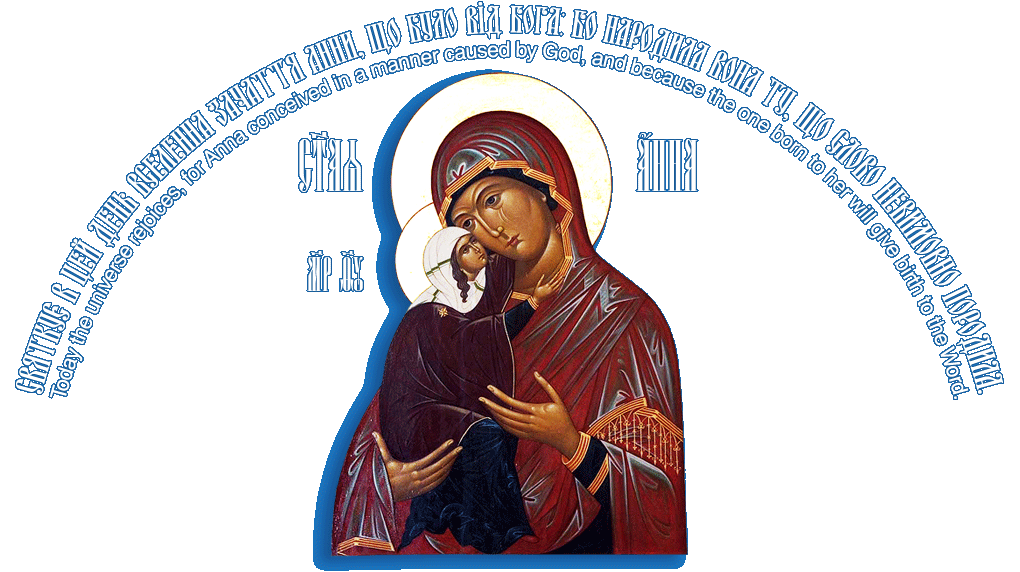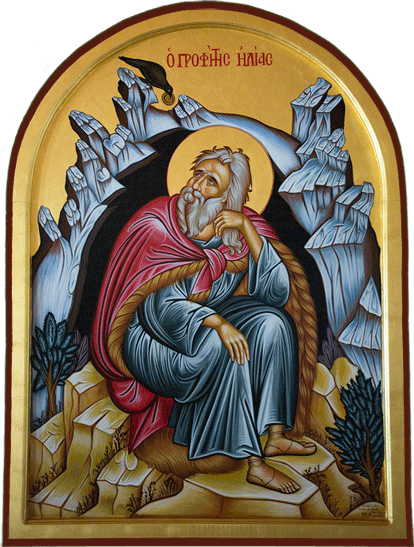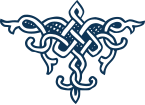Great Vespers • Велика Вечірня
Genesis 1:1-5
In the beginning God created the heaven and the earth.
And the earth was without form, and void; and darkness was upon the face of the deep. And the Spirit of God moved upon the face of the waters.
And God said, Let there be light: and there was light.
And God saw the light, that it was good: and God divided the light from the darkness.
And God called the light Day, and the darkness he called Night. And the evening and the morning were the first day.
Буття 1:1-5
На початку Бог створив Небо та землю.
А земля була пуста та порожня, і темрява була над безоднею, і Дух Божий ширяв над поверхнею води.
І сказав Бог: Хай станеться світло! І сталося світло.
І побачив Бог світло, що добре воно, і Бог відділив світло від темряви.
І Бог назвав світло: День, а темряву назвав: Ніч. І був вечір, і був ранок, день перший.
Great Vespers: Evening Worship of the Orthodox Church
Orthodox Christians still count the days in accordance with the Old Testament story of creation. The liturgical day, therefore, begins in the evening. Vespers is the service which begins the daily cycle of worship – e.g., Saturday evening Vespers is the first service of Sunday.
As the world falls into darkness, a natural theme for evening worship is the need and anticipation of light. Vespers speaks of our hope in Christ, the Light of the World, Who enlightens a world darkened by sin. Most of the hymns of Vespers are either directly from, or references to, the Old Testament. These all reflect the sense of longing for the Light that God’s People held in their hearts while waiting for the Messiah, the True Light.
Psalm 103
The first major hymn of Vespers is Psalm 103, a hymn of praise to God the Creator: “How glorious are Your works, О Lord. In wisdom have You made them all.” This hymn reflects the blessed state of humanity at the creation of the world, when God first said, “Let there be light!” This holy state does not last long, though. Soon humanity rebelled against God and was cast out of Eden. The Royal Doors of the iconostas are closed and the priest comes to stand in front of them, like Adam lamenting outside the gates of Paradise. Prayer before the Royal Doors continues after Psalm 103, with the Great Litany — or “Litany of Peace”.
The Psalms (Kathisma)
After the Great Litany, a series of Psalms are chanted. Occasionally selected verses are chanted in a shorter, composite hymn. On Saturday evenings, Psalms 1 to 8 are prescribed. “Blessed is the man who walks not in the counsel of the ungodly.” (Ps. 1:1). “The Man” referred to here is a prophetic reference to Christ, the True Man and Saviour of the world. Jesus’ great act of delivering the world through His resurrection is foreshadowed as we sing the verses: “Arise, О Lord! Save me, О my God! Salvation belongs to the Lord, Your blessing is upon Your people!” (Ps. 3:7,8) Though we are cast out of Paradise, God promises that the light of salvation will dawn upon us.
The “Lamp-lighting Psalms” & Poetic Verses
The next major hymn of Vespers again comes from the Book of Psalms. The “Lamp-lighting Psalms” are 140, 141, 129 and 116. Originally, it was during the chanting of these psalms that the lamps were lit in the church. The first two verses of Palm 140 are sung, while the rest of the psalms are chanted by a reader.
As the final verse of Psalm 141 is chanted we begin interweaving special poetic hymns between the Psalm verses. These are the first variable hymns of the service. The variable hymns of Vespers form the “teaching element” of this service; they reveal the significance of the feast or saint being commemorated that day. As every Sunday celebrates Jesus’ resurrection, the variable hymns of Saturday evening have a resur-rectional theme.
As the Lamp-lighting Psalms and poetic verses are being chanted, the priest censes the church. Incense is a symbol of the prayers of the faith, as mentioned in Psalm 140, verse 2: “let my prayer arise in Your sight as incense, and the lifting up of my hands be an evening sacrifice.” The lighting of the Temple lamps and the offering of incense was an obligation instituted by God in the Old Testament (Ex. 27:21, 30:8), which was continued in the Apostolic Church. The service of vespers is the continuation of this liturgical commandment of God.
The Entrance & “O Gladsome Light”
At the conclusion of the Lamp-lighting Psalms, the Royal Doors are opened and an entrance is made, usually with the censer*. During this entrance, we sing the ancient evening hymn, “O Gladsome Light” — a hymn of praise to Christ, the Light of the World. With the singing of this hymn, we see the first ray of hope for the world, as the Light of Jesus’ Divinity begins to shine in the darkness of the fallen world.
* At Vespers where there is a Gospel reading, the Gospel book is brought out instead.
The Evening Prokeimen & Readings
Following the Entrance is the Evening Prokeimen, a psalm verse with refrain. At one time, readings from the Old Testament were chanted at every Vespers – the prokeimen was the preamble to these readings. Now Old Testament readings are prescribed only on selected holy days. These readings, called “Parameias”, reveal the Old Testament prophecy about the celebration of the day.
The Evening Prayer
After another series of petitions calling upon God to shed His mercy upon us, we recite the evening prayer of Vespers:
The Evening Prayer
Vouchsafe, O Lord, to keep us this evening without sin. Blessed are You, O Lord, the God of our fathers, and praised and glorified is Your Name forever. Amen.
Let Your mercy, O Lord, be upon us, as we have set our hope on You.
Blessed are You, O Lord; teach me Your statutes.
Blessed are you, O Master; give me understanding of Your statutes.
Blessed are You, O Holy One; enlighten me by Your statutes.
O Lord, Your mercy endures forever. Despise not the works of Your hands.
To You is due praise; to You is due song; to You glory is due; to the Father and to the Son and to the Holy Spirit, now and ever, and unto the ages of ages. Amen.
Вечірня Молитва
Сподоби, Господи, вечір цей без гріха зберегтися нам. Благословен єси, Господи Боже отців наших, і хвальне й прославлене є Ім’я Твоє навіки. Амінь.
Нехай буде, Господи, милість Твоя на нас, бо ми уповаємо на Тебе.
Благословен єси, Господи, навчи мене заповітів Твоїх.
Благословен єси, Владико, врозуми мене заповітами Твоїми.
Благословен єси, Святий, просвіти мене заповітами Твоїми.
Господи, милість Твоя повік, творіння рук Твоїх не зневаж. Тобі подобає хвала, Тобі подобає оспівування, Тобі слава подобає Отцю, і Сину, і Святому Духові нині, і повсякчас, і на віки віків. Амінь.
Following this prayer is a litany in which we pray for God’s protection throughout our lives, to our final breath.
The Litia
On major feast days a special service, called the “Litia” is added here. It consists of a procession to the rear of the Church for a special litany of supplication on behalf of the Church and Civil Authorities, and all those in need of God’s help; following these prayers, the clergy process to the front of the church for a blessing of bread, wheat, wine, and oil. The faithful will partake of the bread and wine, and be blessed with the oil, at the end of the service.
The Aposticha
The second series of “teaching hymns” again are interwoven between the chanting of Psalm verses.
The Song of St. Simeon
The final major hymn of Vespers, the Song of St. Simeon, comes from the New Testament. Simeon was the righteous Jewish elder whom God promised would not die until he had seen the Messiah. On the fortieth day after Jesus’ birth, Joseph takes Mary and the Christ-Child to the temple for His dedication ceremony. As Simeon takes Jesus in his arms, he realized that this Child is God’s promised Saviour. He then sings these words which have echoed down to us throughout history: “Now let Your servant depart in peace, О Master, for my eyes have seen Your salvation…” Simeon called the Child “a Light to enlighten the Gentiles, and the glory of God’s people, Israel.” The world, cast into the darkness of sin so long ago, is illumined by the coming of Christ the Light of the world.
The Troparia
Just before the dismissal and benediction, the faithful sing the third variable hymn of the service. The “tropar” is an anthem of a particular Feast or Saint. On Saturday evenings, one of the eight resurrectional tropars is sung (each with it’s own melody or “tone”), followed by a Theotokion, or anthem to the Mother of God.
See also:
• Orthodoxy • Православіє
• What is the Divine Liturgy?
• The Symbolism of the Eastern Orthodox Marriage Service
• In Praise of the “New Eve”: The Mother of God and the Dignity of Women
• Angels: The Eastern Orthodox Teaching on the “Body-less Powers”


